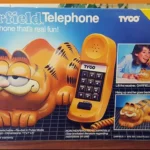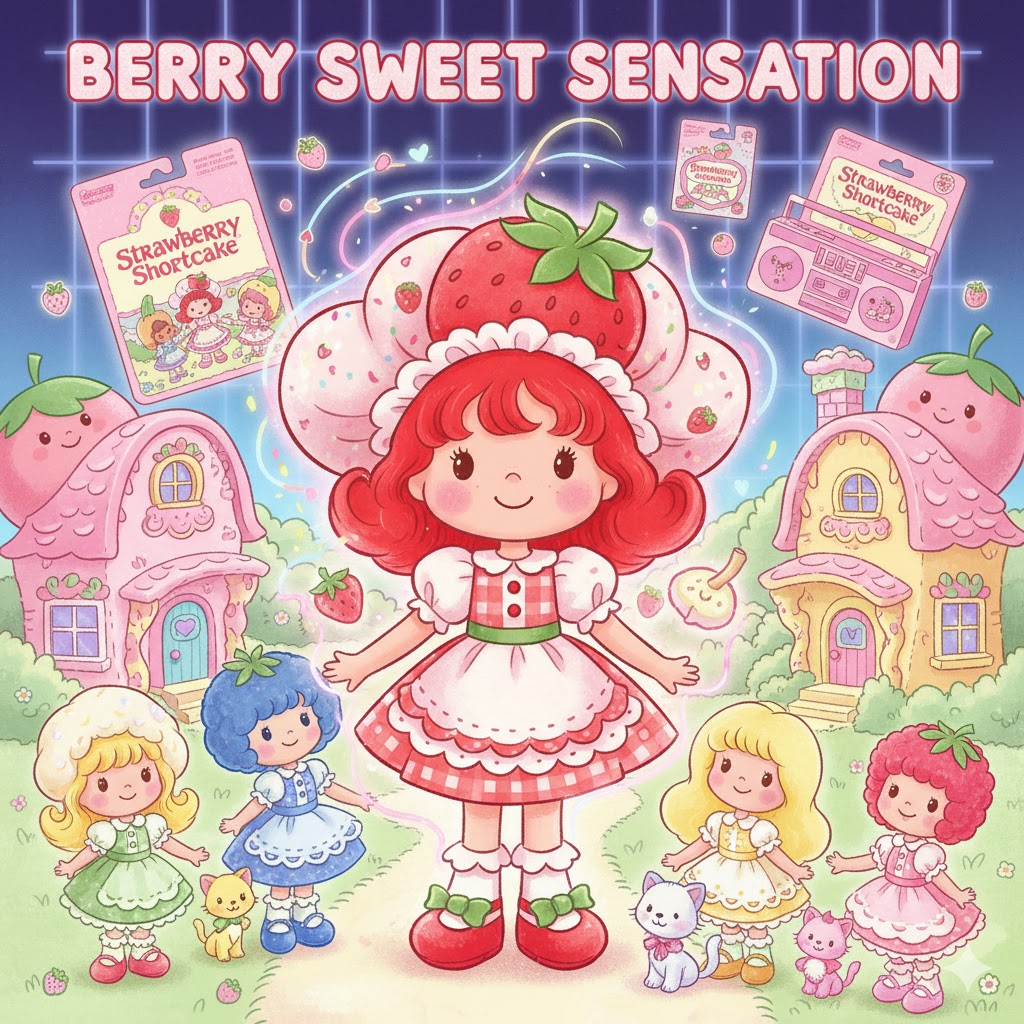 The 1980s was a vibrant decade filled with unforgettable pop culture moments, quirky gadgets, and a distinctive aesthetic that still stirs nostalgia today. Among the many memorable products that defined childhood during this era was the Garfield phone—a playful, character-themed landline telephone featuring Jim Davis’s beloved lasagna-loving orange cat. This fun and functional device not only served as a means of communication but quickly became a cherished symbol of 1980s kid culture. Garfield, introduced to the world in 1978 through the comic strips of Jim Davis, rapidly grew in popularity, making its way beyond newspapers and comic books to television screens and merchandise aisles. By the early 1980s, it wasn’t long before Garfield’s fame extended to everyday household gadgets like the Garfield phone. At a time when most children’s phones were simple rotary or push-button models, the Garfield phone stood out as a delightful alternative, marrying technology and beloved pop culture characters in one colorful package. Manufactured by companies licensed to capitalize on popular franchises, the Garfield phone was designed to transform an ordinary household item into a fun and decorative piece that appealed directly to children and their parents alike. It was not just about functionality; it was about bringing personality and playfulness into a device that was typically mundane.
The 1980s was a vibrant decade filled with unforgettable pop culture moments, quirky gadgets, and a distinctive aesthetic that still stirs nostalgia today. Among the many memorable products that defined childhood during this era was the Garfield phone—a playful, character-themed landline telephone featuring Jim Davis’s beloved lasagna-loving orange cat. This fun and functional device not only served as a means of communication but quickly became a cherished symbol of 1980s kid culture. Garfield, introduced to the world in 1978 through the comic strips of Jim Davis, rapidly grew in popularity, making its way beyond newspapers and comic books to television screens and merchandise aisles. By the early 1980s, it wasn’t long before Garfield’s fame extended to everyday household gadgets like the Garfield phone. At a time when most children’s phones were simple rotary or push-button models, the Garfield phone stood out as a delightful alternative, marrying technology and beloved pop culture characters in one colorful package. Manufactured by companies licensed to capitalize on popular franchises, the Garfield phone was designed to transform an ordinary household item into a fun and decorative piece that appealed directly to children and their parents alike. It was not just about functionality; it was about bringing personality and playfulness into a device that was typically mundane.
The design of the Garfield phone perfectly captured the essence of the character. Typically molded in vibrant orange and black, reflecting Garfield’s iconic stripes, the handset was often shaped like Garfield’s head or prominently featured his face on the receiver. Some versions even went so far as to have the coiled cord mimic Garfield’s tail, adding an extra layer of whimsy. The base of the phone often showed Garfield lounging in his classic lazy pose, sometimes clutching a lasagna or sporting his trademark mischievous grin. This attention to detail made the phone visually striking, almost more like a toy than a standard communication device. Although it lacked modern features like cordless operation or digital displays, it performed all the essential roles of a phone in the 1980s. Early models featured rotary dials—the dominant dialing technology of the time—while later versions embraced push-button dialing as phone technology evolved. Its larger-than-average size ensured it was a noticeable fixture in any room, transforming a child’s bedroom or play area into a space bursting with color and fun. More than just a tool to make calls, the Garfield phone became a playful statement piece.
The cultural impact of the Garfield phone extended well beyond its functionality. It perfectly embodied the 1980s craze for character-themed gadgets and collectibles, joining the ranks of other iconic products like Care Bears alarm clocks, Transformers toys, and Teenage Mutant Ninja Turtles lunchboxes. For children, owning a Garfield phone was a badge of honor—a way to show off their affection for the comic strip and cartoon series they adored. It also gave them a sense of independence, allowing kids to participate in household communication networks in an interactive and exciting way. Unlike the plain and utilitarian phones found in most homes, the Garfield phone offered personality and whimsy. Television commercials and advertisements further fueled demand, presenting the phone as the perfect gift for birthdays or holidays—combining practicality with playfulness. Many parents saw it as a positive way to encourage responsible telephone use and help their children develop early communication skills. The Garfield phone also reflected a broader marketing trend of the 1980s, when beloved media characters were increasingly integrated into everyday life, blurring the lines between entertainment, merchandise, and routine.
To fully appreciate the Garfield phone’s significance, it is essential to consider the 1980s technological landscape. Landline phones were ubiquitous household fixtures but remained largely utilitarian and unadorned. The concept of phones as both communication devices and decorative objects was still emerging. This phone represented one of the earliest forays into kids’ phones as a distinct category. As children began to carve out their own personal spaces—bedrooms decorated with posters, toys, and memorabilia—the Garfield phone fit perfectly into this environment. It gave children a dedicated phone that felt uniquely theirs, rather than relying solely on the family’s main phone line. The tactile experience of using a rotary phone, with its finger-dialing mechanism and audible clicks, added to the phone’s appeal. It offered a slower, more tangible interaction than today’s instant-touchscreens, and the bright colors and Garfield imagery made the experience fun and uniquely 1980s. The phone’s presence helped nurture early social and communication skills during a time when personal communication was becoming more accessible and important for children.
Years after the 1980s, the Garfield phone has become a prized collector’s item for fans of vintage technology and nostalgia enthusiasts. It serves as a tangible connection to childhood memories and a simpler time, when communication was analog and cartoons ruled the airwaves. Today, Garfield phones occasionally appear in online auctions and vintage shops, often attracting bids from adults eager to recapture a piece of their youth. The phone’s distinctive design, combined with the enduring popularity of Garfield as a character, ensures it remains a beloved collectible. More than just an object, the Garfield phone invites reflection on how technology and entertainment coexisted and shaped childhood experiences. It serves as a reminder of how far communication devices have evolved and how personalization of technology with pop culture icons has continued to thrive into the digital age. Ultimately, the 1980s Garfield phone was far more than a mere tool for making calls. It was a cultural icon, a playful decoration, and a tangible connection to one of the decade’s most enduring and beloved cartoon characters. By blending function with fun, it captured the spirit of 1980s childhood and helped pave the way for character-themed gadgets that remain popular today. Its legacy lives on in the memories of those who grew up dialing their friends and family on a Garfield phone, its bright orange body and smirking face a cheerful presence on desks and bedroom walls. The Garfield phone remains a testament to an era when technology was just beginning to embrace personality and style—a time when even a simple phone could bring laughter, warmth, and a little magic into everyday life.


